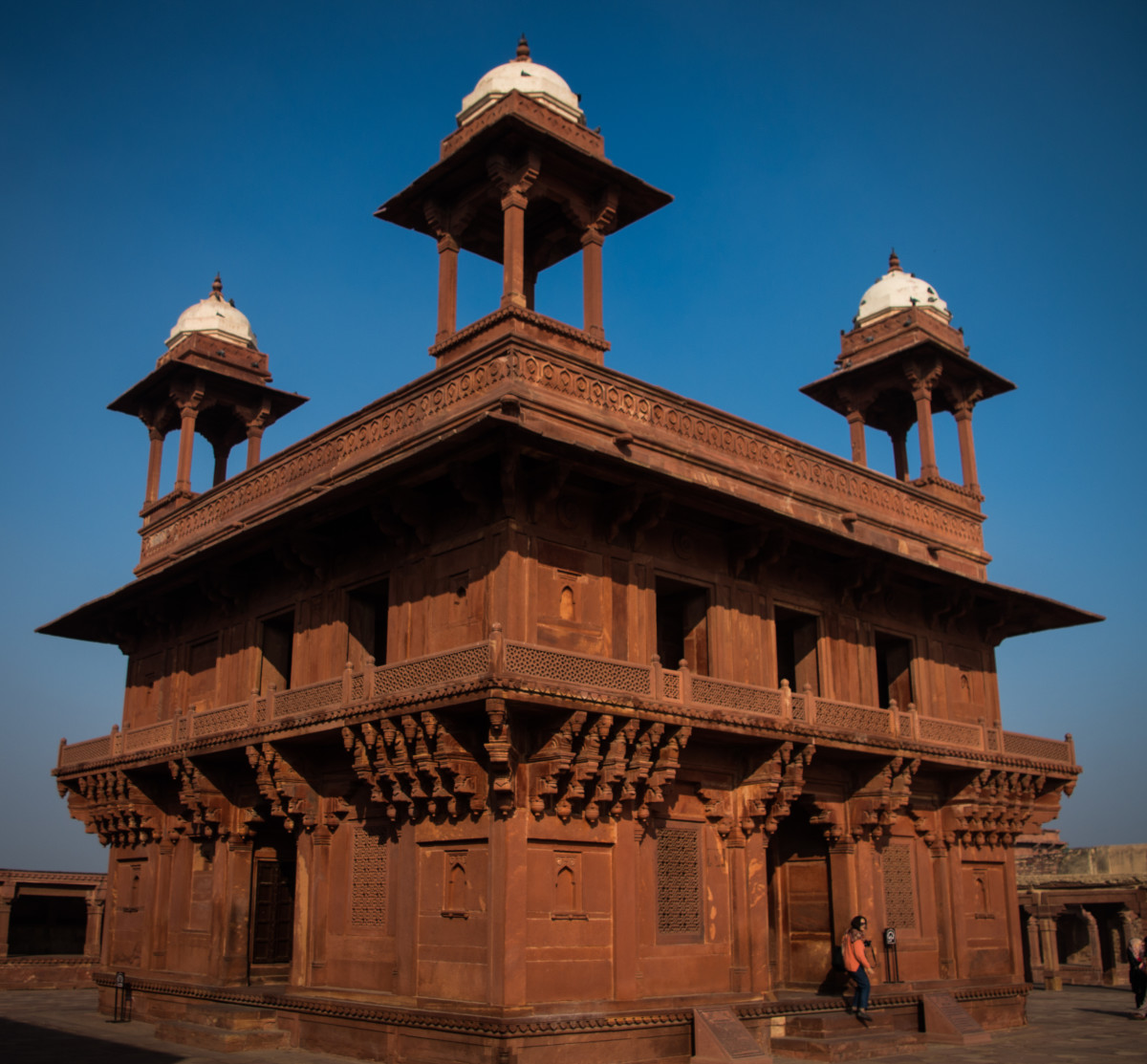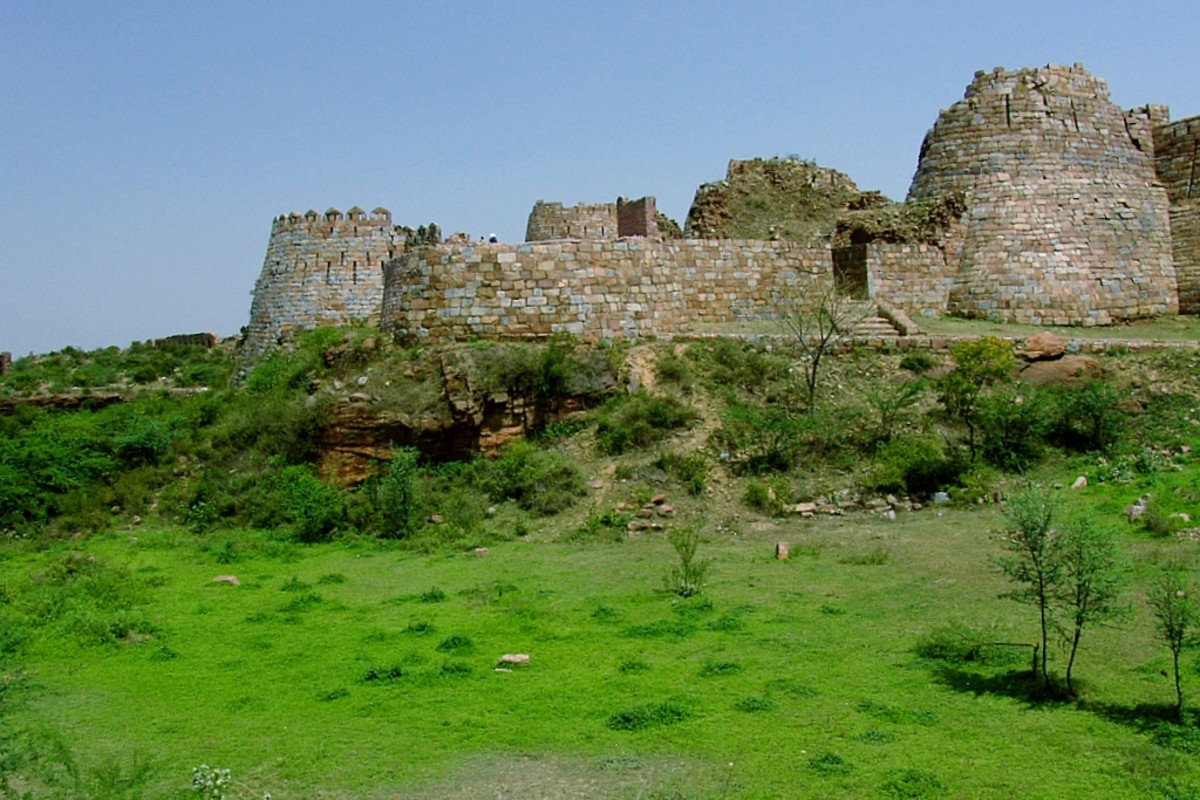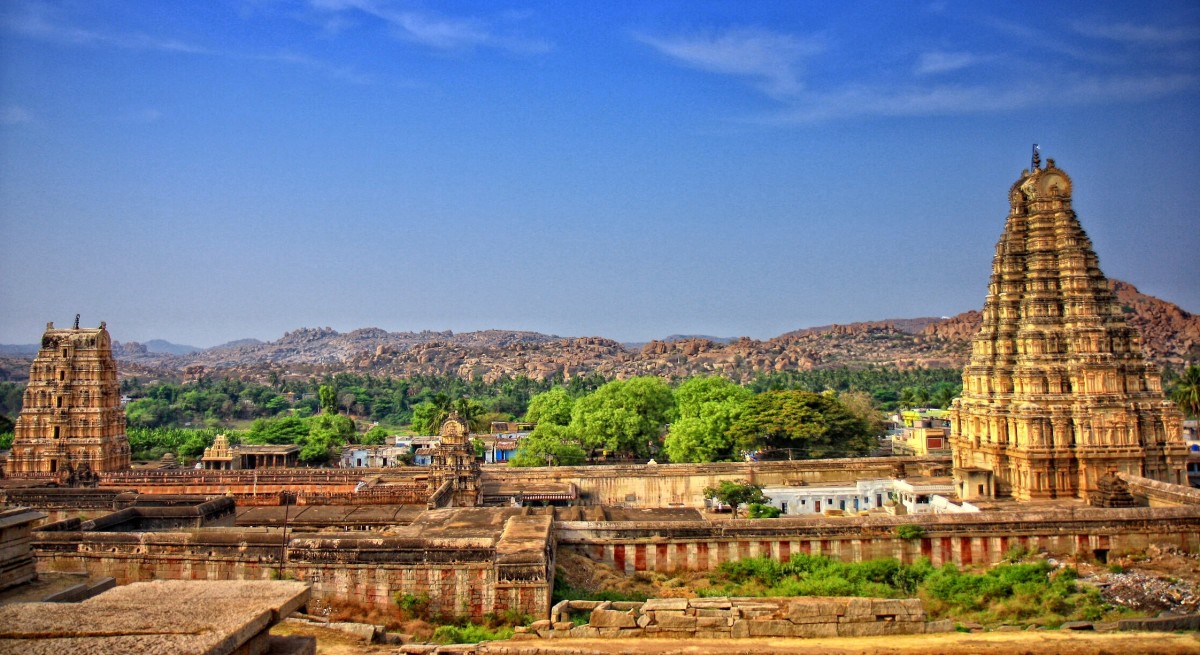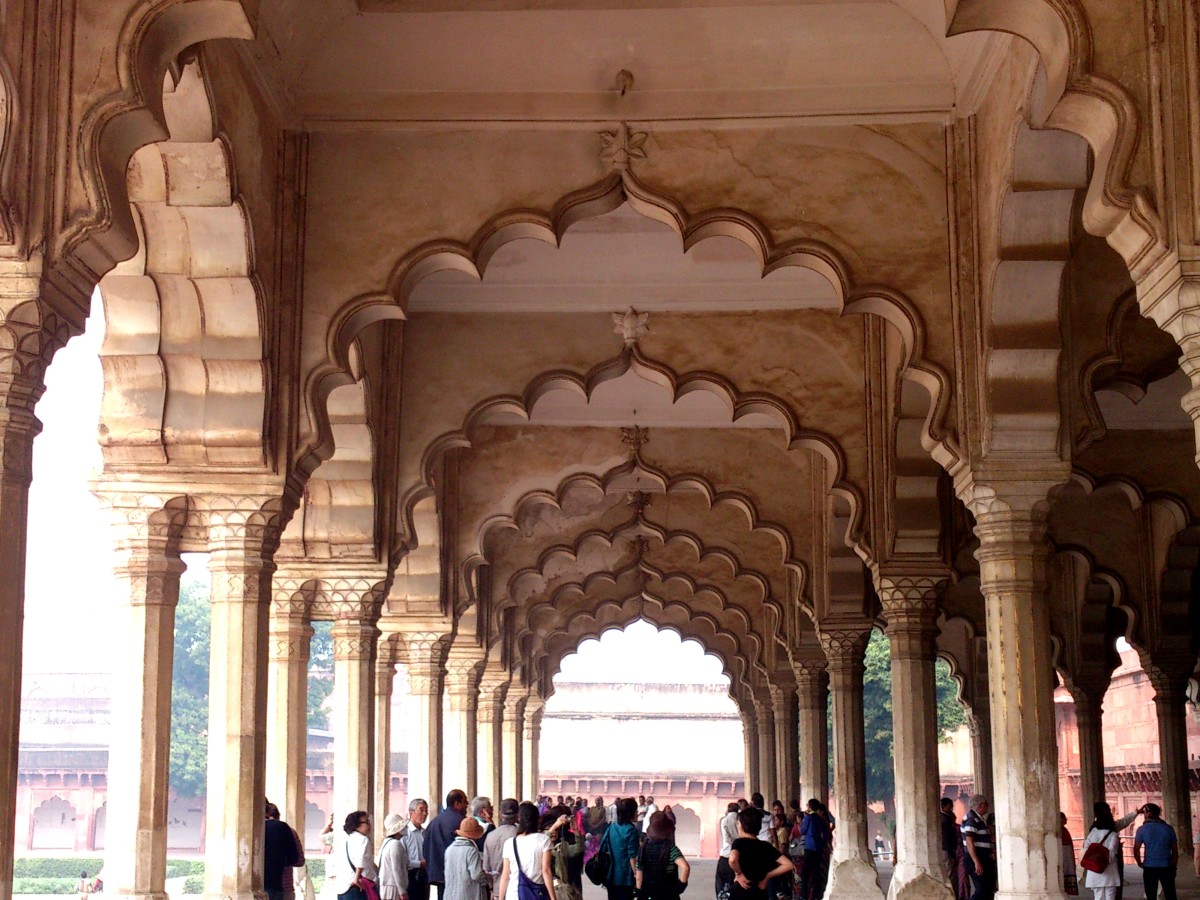100 Historical Places and Monuments in India
INDIA'S TOP 100 MUST-SEE HISTORICAL MONUMENTS OF ALL TIME

India's recorded history began in the cradle of Indus Valley (Harappa) around the 5thmillennium BC. Many rulers and kingdoms have risen and fallen on the Indian subcontinent, some as small as a few square kilometers to a few which were as large as the whole present country. These kings and emperors constructed a number of architectural wonders in their times, to mark of their prominence, satisfy their creative impulses, and or honor their ancestors. Many monuments have been destroyed, but many important buildings remain. Here are the top 100.
AGRA FORT
1. Agra Fort This famous red fort is situated on the banks of river Yamuna in Uttar Pradesh. The semicircular fort is 4km in diameter and was built in 1565 by the Mughal Emperor Akbar.
AJANTA CAVES
2. Ajanta Caves The Ajanta caves are 29 cut-rock cave monuments made by Buddhist monks in the 2nd century BCE. They are located in Maharashtra in India's Aurangabad district.
3. Akbar's Tomb Located near Agra in Sikandra, Akbar's tomb is surrounded by high walls at the center of a magnificent garden.
4. Amarnath One of the most important pilgrimage centers for Hindus, Amarnath is located in the valley of the Himalayas and is famous for its huge cave, which rises up 150 feet high and 90 feet across.
5. Bahai Temple Bahai is a religion established by Mirsa Hussein Ali in the 19th century. The Baha'i temple was built in 1989 at Nehru Place in Delhi.
6. Basilica of Bom Jesus Goa is a major center for churches and chapels and is often called Rome of the East. The Basilica of Bom Jesus at Old Goa was built by the Jesuits in 1605.
7. Bhubaneswar A city of the 3rd century, Bhubaneswar is the capital of Orissa. About 500 temples were built there between the 6th and 16th centuries.
8. Charminar Situated in Hyderabad, Andra Pradesh, the Charminar was built by Mohammed Quli Shahi,the sultan of Golconda, in 1591.
9. Church of Lady of Ransom In the 19th century, the Roman Catholics built the St.Thomas Church at Kanyakumari ,Tamil Nadu. The church was later rebuilt and named Lady of Ransom.
10. Ellora Caves The Ellora caves are found in Maharashtra in the Aurangabad district. There are 34 rock-cut cave temples built by the Chalukyas between the 3rdand 9th centuries.
FATHEPUR SIKRII

11. Fathepur SikriI Fatehpur Sikri is a magnificent city in Uttar Pradesh. It was found in 1569 by the Mughal emperor Akbar.
12. Gandhi Memorial This spot on the banks of the Yamuna River, at Raj Ghat in Delhi, is where Mahathma Gandhi was cremated in 1948. It is marked with a simple square platform of black marble.
13. Gateway Of India This great landmark, at Mumabi Port in Maharastra, is an archway built to honor Great Britain's King George V and Queen Mary upon their visit to India in 1911.
14. Golgumbaz The Golgumbaz, at Bijapur, Karnatka, is the mausoleum of Mohamed Adil Shah, King of Bijapur.
15. Golconda Fort Golconda Fort was the capital city of Qutb Shahi dynasty, 8 km west of Hyderabad, Andra Pradesh.
GOLDEN TEMPLE, OR HARI MANDIR
16. Golden Temple The Golden Temple, or Hari Mandir, is located in Amritsar, the largest city in Punjab. The temple was built on an island in Amrit Sarovar .
17. Gometeswara The famous Jain pilgrimage center is located at the top of Vindhyagiri hills in Sravanabelagola, Karnataka, 3,000 feet above sea level.
18. Gwalior Fort In the fifteenth century, Raja Mansingh built the Gwalior Fort at Gwalior, Madhya Pradesh. It was constructed out of sandstone on a basalt hill.
19. Haridwar This site lies in the Valley of the Sivalik Hills, on the banks of the Ganges River.
20. Hawa Mahal The Hawa Mahal is at Jaipur, the capital of Rajastan. Hawa Mahal means "the palace of the wind." It was built by King Sawai Prathap Singh in 1799.
TUGHLAQABAD FORT

21. Tughlaqabad Fort Located in Delhi, this fort lies in ruins across six kilometers.
22. Qutub Minar in Delhi is the second-highest tower in India, rising 73 meters.
23. Purana Quila is the oldest fort in Delhi.
24. Lodhi Gardens in Delhi is a sprawling garden containing several important ancient tombs.
25. Jama Masjid in Delhi is India's largest Mosque.
26. Humayun's Tomb in Delhi is the tomb of the Mughal Emperor Humayun.
27. Red Fort was the residence of the Mughal emperor of India for nearly 200 years. It is located in the center of Delhi and houses a number of museums.
28. Amaravathi is a Bhuddhist site in the Guntur District.
29. Nagarjuna Konda is a Bhuddhist site.
30. Mangalagiri is a Bhuddhist site near Vijaywada City.
31. Ghantasala is a Bhuddhist site in the Krishna District.
32. Nelakondapalli is another Bhuddhist Site in the Krishna District.
33. Dhulikatta is a Bhuddhist site in the Karim Nagar District.
34. Lingapalem is a Bhuddhist site in the West Godavari District.
35. Mattanchery Palace is located in the Kerala District.
36. Kushinagar is a Buddhist pilgrimage site.
37. Makka Masjid is located in Hyderabad City.
38. Amaravathi is a Bhuddhist site located in the Guntur District.
39. Chunar is a 6th century fort constructed by Chandragupta Vikramaditya.
40. Mangalagiri is Bhuddhist site near Vijaywada.
TAKHT SRI PATNA SAHIB
41. Takht Sri Patna Sahib is one of the most famous Sikh pilgrimage sites in India.
42. Darbhanga is among the oldest cities in Bihar.
43. Mahabodhi Temple is a Buddhist shrine and UNESCO World Heritage Site.
44. Barabar Caves are the oldest caves in India.
45. Khuda Bakhsh Oriental Library is the oldest library in India.
46. Mangueshi Temple is one of the largest and most frequently visited temples in Goa.
47. Kurukshetra is the site of the Kurukshetra War of the Mahabharata. The Bhagavad Gita was preached there during the war when Lord Krishna found Arjuna in a dilemma.
48. Jyotisar is where Krishna delivered the Bhagavad Gita to Arjuna to prepare him to face stronger and greater warriors.
49. Thanesar is an important Hindu pilgrimage center on the banks of the Saraswati Ghaggar River.
50. Pehowa is a sacred place for Hindus.
51. Panchkula
KALKA-SHIMLA RAILWAY
52. The Kalka-Shimla Railway is a mountain railway and UNESCO World Heritage Site.
53. Dharamshala is the home of the Dalai Lama in India..
54. Vaishno Devi is a holy Hindu shrine.
55. Badami was the regal capital of the Badami Chalukyas from 540 to 757 AD.
56. Aihole is a village with a historic temple complex located 510 km from Bangalore.
57. Pattadakal is a UNESCO World Heritage Site on the left bank of the Malaprabha River in Bagalkot.
58. Mahakuta is a group of temples is located in Mahakuta, a village in the Bagalkot district of Karnataka state. It is an important place of worship for Hindus and the location of a well-known Shaiva monastery.
HAMPI

61. Hampi is a UNESCO World Heritage site and was one of the largest and richest cities in the world during its prime. Around 1500 AD Hampi had about 500,000 inhabitants, making it the second largest city in the world after Peking-Beijing.
62. Lakshmeshwar is home to several important temples, including the Shiva "Someshwara Temple."
63. Mysore was the capital of the Kingdom of Mysore from 1399-1947. In its center is opulent Mysore Palace, which blends Hindu, Islamic, Gothic, and Rajput styles.
64. Sringeri is a hill town located in Chikkamagaluru district in the South Indian state of Karnataka.
65. Banavasi is an ancient temple town in Uttara Kannada District in the South Indian state of Karnataka.
66. Belur is renowned for its Chennakeshava Temple, one of the finest examples of Hoysala workmanship.
67. Bijapur is the district headquarters of Bijapur District of Karnataka state and the headquarters for Bijapur Taluka.
68. Bidar is a hill-top city situated on the deccan plateau, in the north-eastern part of Karnataka state.
69. Gulbarga is the administrative headquarters of the Kalaburagi District.
70. Raichur is located between Krishna and Tungabhadra rivers.
71. Dakshineswar Kali Temple is a Hindu temple located in Dakshineswar near Kolkata. Situated on the eastern bank of the Hooghly River, the presiding deity of the temple is Bhavatarini.
72. Gwalior occupies a strategic location in the Gird region of India. It is important both historically and as an archaeological site.
73. Jaunpur is an historical city founded by the Sultan of Delhi Feroz Shah Tughlaq.
74. Chhatrapati Shivaji Terminus is a UNESCO World Heritage site and historic railway station in Mumbai Maharashtra, India that serves as the headquarters of the Central Railways.
ELEPHANTA CAVES
75. Ancient Elephanta Caves are a UNESCO World Heritage site and series of caves on an island, reachable by boat.
76. Konark Sun Temple is a UNESCO World Heritage Site believed to have been built by king Narasimhadeva I of Eastern Ganga Dynasty around AD 1250.
77. Jagnath Temple at Puri is a famous, sacred Hindu temple dedicated to Jagannath.
78. The Leaning Temple of Huma is the only leaning temple in the world.
79. Udayagiri and Khandagiri Caves are Buddhist sites in Orissa.
80. Lalitagiri and Ratnagiri are Buddhist sites in Orissa.
81. Jodhpur A fortress-city at the edge of the Thar Desert, Jodhpur is famous for its blue homes and architecture.
82. Udaipur Known as the "Venice" of India.
83. Jaisalmer Famous for its golden fortress.
84. Barmer Barmer and surrounding areas offer a perfect picture of typical Rajasthani villages.
85. Bikaner is famous for its medieval history as a trade route outpost.
86. Mount Abu is the highest peak in the Aravalli Range of Rajasthan.
87. Pushkar is home to one of the very first Brahma temples in the world.
88. Keoladeo National Park is a UNESCO World Heritage site.
89. Nathdwara This town, near Udaipur, hosts the famous temple of Shrinathji.
90. Rumtek Monastery
NILGIRI MOUNTAIN RAILWAY
91. The Nilgiri Mountain Railway is a UNESCO World Heritage site.
92. Brihadeeswarar Temple is home to a great Hindu Temple.
93. Sri Ranganathaswamy Temple - A great Hindu Temple is situated here.
94. The Valley of Flowers is a UNESCO World Heritage site.
95. Nanda Devi National Park is a UNESCO World Heritage site.
96. Badrinath is one of the four most sacred and revered Hindu temples.
97. Kedarnath another of the four most sacred and revered Hindu temples.
98. Gangotri another of the four most sacred and revered Hindu temples.
99. Yamunotri another of the four most sacred and revered Hindu temples.
100. Gorakhpur was home to Buddhist, Hindu, Muslim, Jain, and Sikh saints.

No comments:
Post a Comment